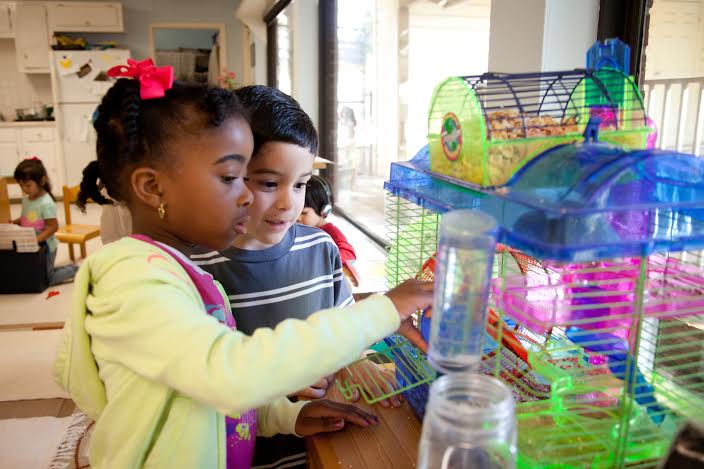Why Montessori?
Evidence of Success
A number of Montessori programs that provide services for children and families from birth to age six have reported remarkable success.
Montessori Partners Serving All Children: Minneapolis, Minnesota 1
Student population:
- 70% children of color: 41% African American, 35% Hispanic/Latino
- 44% receive free and reduced price lunch
Outcomes:
- Children receiving free and reduced price lunch scored 93%-98% proficiency across the disciplines
- On the Bracken School Readiness scale, Montessori four-year-olds scored 91% proficiency in Math and 97% in Language as compared to the state averages of 52% (Math) and 59% (Language)
- No disparities were measured in children’s achievement across income levels, race, or language spoken in the home
Lumin Education:
Dallas, Texas
Student Population:
- 74% Low-income
- 81% Hispanic
- 59% Primary Language Other Than English
Outcomes:
- For the past 7 out of 8 years, Lumin students have earned the state’s Gold Performance Award or Texas Distinction Designation based on students’ excellent reading performance2
- 81% of Lumin students passed the Texas state-mandated reading test (STAAR) as compared to 77% in the region and 76% in the state despite having a higher percentage of English Language Learners than the state2
- Children who attended Lumin’s Montessori programs through the 3rd grade had increased high school graduation rates of 95% compared to the state average of 88% 2
- Of Lumin’s alumni who graduated from high school, 89% of those students went onto college compared to the state average of 56% 3
These Montessori programs proved particularly successful with:
- Students of color
- Students from low economic backgrounds
- English language learners.
Both programs recorded high levels of parent, community, and staff involvement.

Footnotes:
- Betty Emarita and Gale Mason-Chagil, “Montessori Partners Serving all Children: Evaluation Report for 2012-2014,” Montessori Center of Minnesota.
- TAPR and AEIS Reports (Texas Education Agency)
- National Information Center for Higher Education Policymaking and Analysis